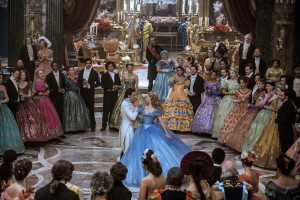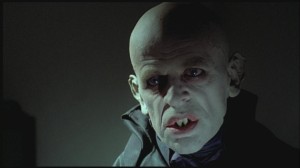
The circumstances surrounding the birth of the 2017 adaptation of Death Note are kinda icky in the most generous of light. Taking a sprawling anime (based on an even more sprawling manga), somehow condense its years of thick plotlines and characterizations into an under-two-hour movie, and then controversially cast all of its Japanese characters with white actors. It’s easy to say that there’s better ways to go about something so ill-conceived–having your producers respond to the whitewashing controversy by saying “The talent and diversity represented in our cast, writing, and producing teams reflect our belief in staying true to the story’s concept of moral relevance, a universal theme that knows no racial boundaries,” is not a great way to go about things either–although even the best version of an “American Death Note” sounds superfluous at best and blatantly offensive at worst, bringing us back to the dreaded J-Horror remake craze that quickly spread through American horror cinema before abruptly stopping when everyone realized The Ring was a total fluke. Director Adam Wingard was essentially handed a can of worms and told to make a meal, and it would be good enough for his fans if he simply made due. Luckily, he took that can and turned it into an ugly, hilarious stab at Hot Topic weeaboo culture, an actual American Death Note in more than just place of origin–Wingard’s Death Note is American precisely because his Light is a very American type of asshole.
Light (Nat Wolff), for those not in the know, is Death Note‘s protagonist, an intelligent teenager who is given the titular death note (in the film’s case, it literally drops from the sky), a magical book that will kill anyone whose name is written in it. Well, that’s not precisely correct–it’s not the book that kills so much as Ryuk (Willem Dafoe), a hulking, glowing-eyed death god with a penchant for apples, tricks, and gruesome decapitations, and it’s Ryuk that convinces Light to begin writing names down in the death note. After a pair of killings (both done for vengeance that only masquerades as justice), Light decides to show his new toy to Mia (Margaret Qualley), the cool hot chick he’s never really talked to before but still feels horny enough about to let in on the fact that he’s literally a murderer. Soon enough, after writing down hundreds of criminals’ names in the death note, master detective L (Lakeith Stanfield) and Light’s father James (Shea Whigham) are skipping and jumping their way down Mia and Light’s trail to find out who this mysterious “Kira” (the name the pair give themselves in a manner totally befitting of their goth child edginess and complete lack of common sense) is.
It’s important to say that these plot developments all come in the first, oh, 25 minutes, and they don’t let up in their pace after that. Saying the movie has “pacing” is itself a bit strange, because it doesn’t, in the traditional sense–it’s more a barely-controlled rush to pack what’s clearly years and years of story into the shortest time possible, cutting out everything not vitally important, opening the damn movie with the death note falling from the sky into Light’s hands and introducing the film’s monster, Ryuk (played with pitch-perfect campiness by Dafoe) while most movies would be trying to do minor things like set up literally anything about the main character. It’s faster than a speeding bullet, and by ditching the extraneous, it clues us into the key joke of the film–it’s not a horror movie at all (or, well, not mostly, besides the monster and the numerous violent deaths, I suppose).
What Wingard has made is a comedy version of End of Evangelion, another work of art (this time actually anime instead of based on an anime) that spends most of its time laughing at and mocking the kind of person who would consider this protagonist a hero in the first place. When Wingard defended the casting by saying, “For me, it became about; what do these themes mean to modern day America,” it would’ve perhaps been greeted more positively if he’d been more specific: it’s a film about what the original manga’s themes mean to white Japan-fetishizing teenagers, the kind of kids who decided that their social ostracizing meant they could do no wrong and didn’t need to examine themselves or what they were consuming, instead becoming obsessive fanboys (and girls) who idolize a character who was called “diabolical” by one of his creators. How would this entitled, self-mythologizing obsessive react to being given the power of the death note? If Light and Mia are any indication, their response would be obnoxiously pathetic and disgustingly sociopathic, respectively. Wingard makes what shouldn’t work into a fantastically funny, subversive, and entertaining knife to the ribs of fanboy culture (otakus are the obvious target, but it’s just as easily applied to self-proclaimed “gamers,” horror geek gatekeepers, and a million other nerd-cred devotees of various colors and stripes) through total conviction to the bit.
The film’s object of derision shows itself most clearly in details, from a sticker in a locker (of course Light would proudly display a sticker that says “normal people scare me”) to Light’s hilarious screams when he first encounters Ryuk, and we cannot forget that Light is, in nearly every scene, the butt of the joke, a sad, impotent man-child with the moral spine of a slug. Mia isn’t much better, for the record–Wingard has said that Mia, instead of being based on her counterpoint Misa in the original work, is based on Light’s sociopathic tenancies, and her lust for death shows that handily. What might’ve, in some conception, started as a noble quest to make the world a better place quickly becomes a game for her, and anyone who might pose a threat is someone who deserves death like any criminal. They’re a morally bankrupt match made in heaven, one sniveling and one conniving, that Wingard takes great pleasure in totally fucking with.
Frankly, the foregrounding of this mockery makes it a bit baffling to accept that the general critical consensus is that Death Note is a horror film that doesn’t work. Like 2015’s also-excellent Jem and the Holograms, the knee-jerk reaction towards remake-obsessed Hollywood buried what made these remakes so spectacular in their own way, an either blatant disregard for the source material or a reflexive commentary on the same. When Wingard was making blisteringly funny and brutal indie genre pieces like You’re Next and The Guest, he could do no wrong, but now that he’s become part of the system and worked with pre-made IP (instead of barely-disguised “original” IP), the need to dismiss him has enveloped his excellent work on Blair Witch and, now, Death Note. It’s a shame really, because he hasn’t lost an ounce of his subversive spirit, remaining one of the most exciting and unpredictable directors currently at work in genre film. He’s our great remixer, taking the past and spitting out something wholly of its time–which is to say that Death Note, contrary to what you might have heard, is one of the more exciting and entertaining genre pieces in a year full of outstanding horror.
—
Directed by Adam Wingard; written by Charley Parlapanides, Vlas Parlapanides, and Jeremy Slater based on the manga Death Note by Tsugumi Ôba and Takeshi Obata; starring Nat Wolff, Lakeith Stanfield, Margaret Qualley, and Willem Dafoe; 101 minutes.



 Derek
Derek
 Isabelle
Isabelle